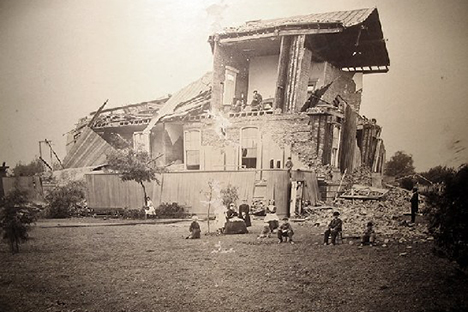This lecture presented in partnership with the UC Berkeley Seismological Laboratory.
In 1868, a destructive earthquake ruptured along the Hayward fault in the Eastern Bay Area, which was then referred to as the “Great San Francisco earthquake”. It lost that name to the much larger 1906 earthquake on the San Andreas fault across the Bay.
During the last 150 years, much research has been carried out on the rate and nature of slip and earthquakes on the Hayward fault to better understand its seismic hazard. It is now understood to have been the source of more than ten large earthquakes in the last 2000 years (spaced on average about 150 years apart!), but it also exhibits significant slow fault creep all along its surface trace, including at the Cal Memorial stadium. Modeling of space geodetic data allowed us to determine the distribution of currently locked and creeping portions of the fault zone deep in the earth, and thus better predict where exactly earthquake slip will occur in the future.
In 1868, damage was severe in Hayward, San Francisco and nearby communities and 30 lives were lost. Since then the population of the Bay Area has grown from ~260,000 to over 7 million and close to $2 trillion of residential and commercial properties are at risk from a future Hayward fault earthquake. The bad news is that the research shows that the Hayward fault is now ready to have another earthquake of the size of the 1868 event. The good news is that much progress has been made to prepare for and improve the resilience of our communities to inevitable future earthquakes on the Hayward and other hazardous faults in the Bay Area.


